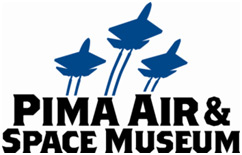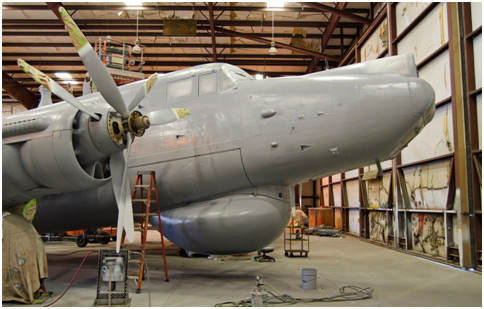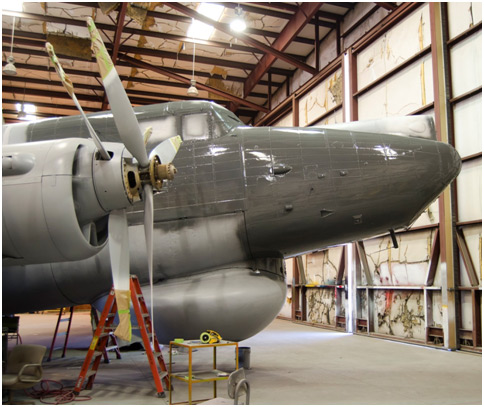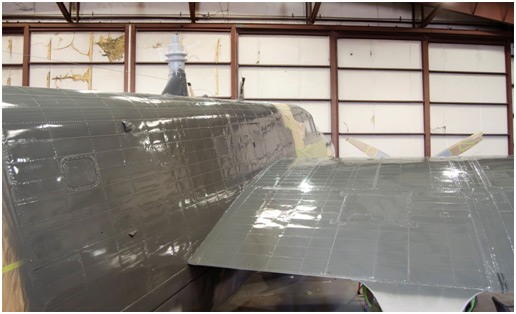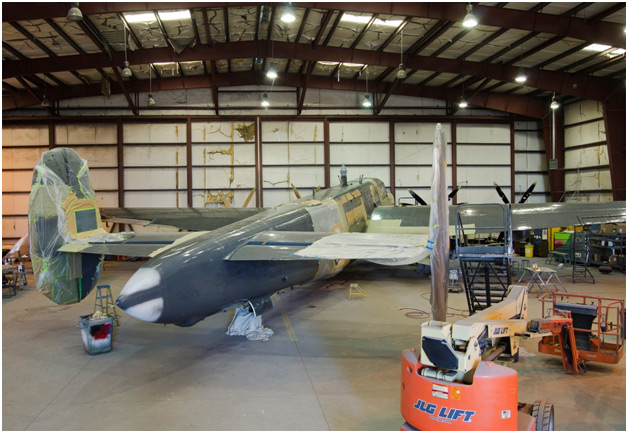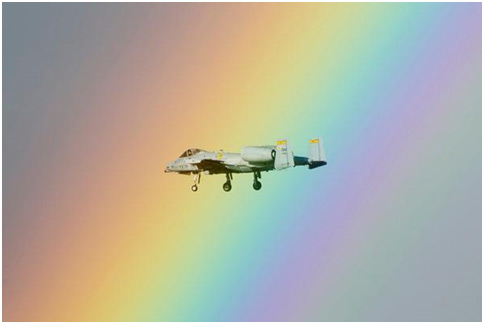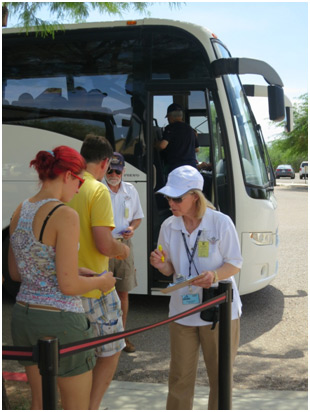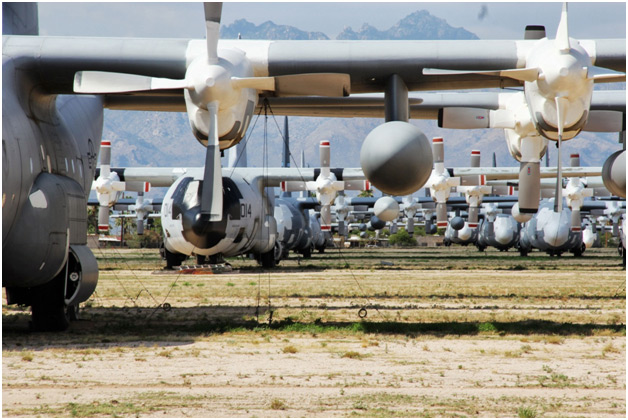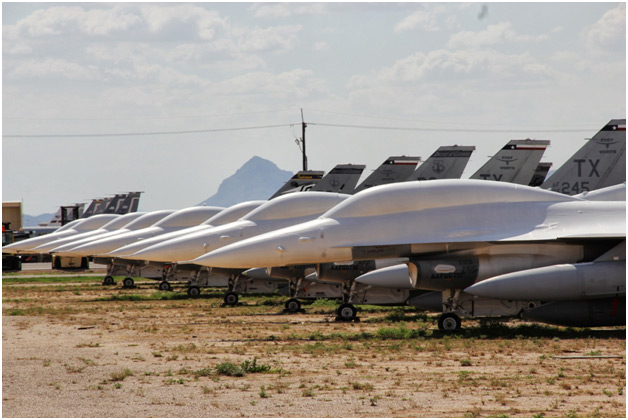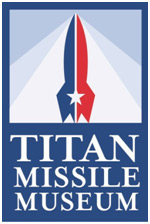FOR IMMEDIATE RELEASE
Mary E Emich
Director of Marketing, Sales and Visitor Services
Arizona Aerospace Foundation
6000 East Valencia Rd
Tucson, AZ 85756
Phone 520 574-0462
This email address is being protected from spambots. You need JavaScript enabled to view it.
PIMA AIR & SPACE MUSEUM ANNOUNCES AN ASTONISHING ADDITION TO ITS INDOOR COLLECTION: THE RARE BELL P-39N AIRACOBRA
Tucson, AZ–Jun. 13, 2013. The Pima Air & Space Museum added a “recovered from the jungle” and newly restored aircraft to its Pacific–theater WWII Hangar: the rare Bell
P-39N Airacobra.
The Bell P-39N Airacobra, serial number 42-18814, began its life at Bell Aircraft’s factory in New York in April 1943. It was shipped to the 5th Air Force in New Guinea where it served until it crashed at Tadji Airfield on the northern coast of New Guinea. It was stripped of useful parts and shoved into the airfield’s surrounding jungle. For the next 30 years, it laid undisturbed as the jungle grew up over it. In 1974, it was recovered by an Australian aircraft fanatic named Charles Darby, who was contracted to recover wrecked aircraft from New Guinea and return them to America to be restored and displayed in museums.
When the P-39 first appeared in 1937 it was an unusual design. Among its many unorthodox design features are the mounting of the engine behind the pilot, the use of an automobile-type door on the side of the cockpit, and the tricycle landing gear. The Airacobra had good low-altitude performance, but suffered at high altitudes. Fortunately, the aircraft’s large, nose-mounted 37mm cannon made it a perfect ground attack aircraft. Large numbers of P-39s were exported to the Soviet Union where they were very popular in this role. The Airacobra was never popular in American or British service, but they still served in combat during the early stages of the war while more capable types were being designed and built. Current Markings: 110th Tactical Reconnaissance Squadron, New Guinea, 1944 with “Girlie” on its “automobile-type” door.
Service History
The P-39 was recovered from Tadji, New Guinea in 1974 by Charles Darby and his crew (who were contracted by David Tallichet, an American aircraft collector). The crew was tasked with recovering as many wrecked aircraft as possible from New Guinea and bringing them back to America. The 42-18814, along with numerous other Airacobra hulks, was laboriously disassembled and hauled out of the jungle by hand until it could be loaded onto trucks for the first leg of its trip back to the United States. Eventually arriving in Chino, California, the decades-long restoration of the plane began as it traveled to many museums and restoration shops. In 2004, the partially restored plane was placed on loan to the Pima Air & Space Museum for restoration and display. In 2010, staff and volunteers began the process of turning a pile of parts into a finished, restored, fighter plane. Three years later, the rebuilt and repainted aircraft joined the other World War II era aircraft displayed in the museum’s Hangar 4, representing the US Army Air Forces’ efforts in the Southwest Pacific.
Technical Specifications:
Wingspan: 34 ft
Length: 30 ft 2 in
Height: 12 ft 5 in
Weight: 8,300 lbs (loaded)
Maximum Speed: 385 miles per hour
Service Ceiling: 35,000 ft
Range: 650 miles
Engine: One Allison V-1710-85 12-cylinder engine with 1,200 horsepower
Crew: 1
ABOUT PIMA AIR & SPACE MUSEUM
Be wowed at Pima Air & Space Museum, one of the largest aviation museums in the world and the largest non-government-funded in the U.S. (TripAdvisor ranks it in the Top 10% worldwide for excellent ratings.) Its significant collection, 300 strong from around the globe, covers commercial, military and civil aviation alongside more than 125,000+ artifacts, including a moon rock donated by Tucsonan and Astronaut Frank Borman. Be amazed by many all-time great aircraft: the SR-71 Blackbird (the world’s fastest spy plane); a B-29 Superfortress (the WWII bomber that flew higher, farther and faster plus carried more bombs); the world’s smallest bi-plane; the C-54 (the Berlin Airlift’s star flown by the famous “Candy Bomber” Col. USAF (Ret.) Gail Halvorsen, a Tucson-area winter resident); plus planes used as renowned-contemporary-artists’ canvases, including Brazilian graffiti artist Nunca. Explore five large hangars totaling more than 177,000 indoor square feet—almost four football fields¬—of air/space craft, heroes’ stories and scientific phenomena. Two+ hangars are dedicated to WWII, one each to the European and Pacific theaters. Pima Air & Space maintains its own aircraft restoration center. It also operates exclusive tours of the “Boneyard,” aka the 309th Aerospace Maintenance and Regeneration Group (AMARG) on Davis-Monthan Air Force Base, plus offers a docent-led tram tour of its 80 acres (additional fees apply). Pima Air & Space Museum is located at 6000 E. Valencia Rd., just off I-10 exit 267, in Tucson. More information can be found at www.pimaair.org, on Facebook, or by calling 520 574-0462.
Note: The 390th Bombardment Group (Heavy) Memorial Museum is closed for reconstruction until further notice.
###
Attachments: PASMBellP-39Njungle.jpg; PASMbellP-39NReconstruction.jpg, photo by John Bezosky; PASMBellP-39N. jpg, photo by John Bezosky
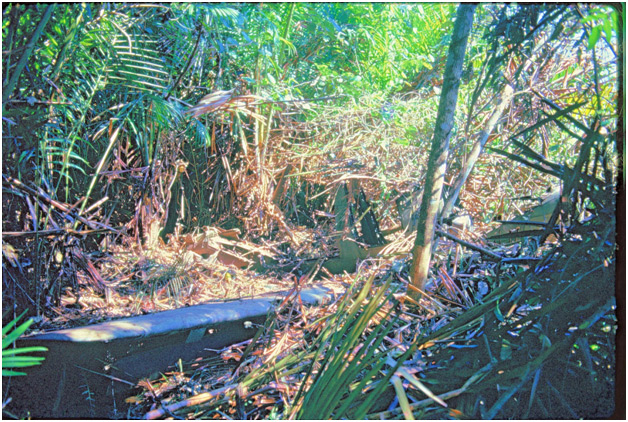
Bell P-39 in the jungle
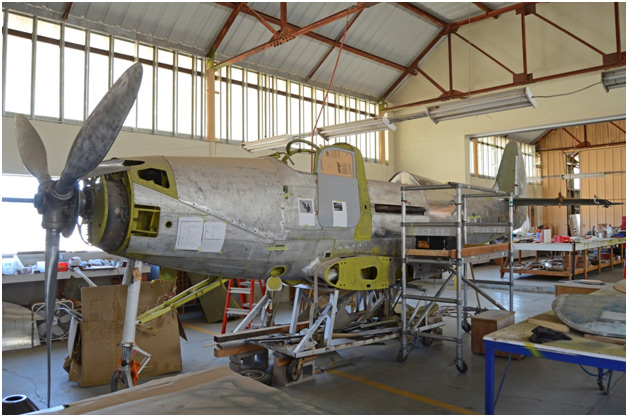
Bell P-39 being reconstructed
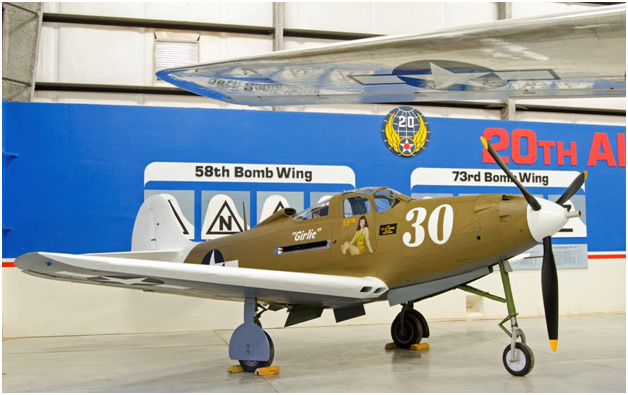
Bell P-39 Airacobra
